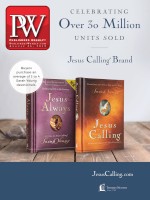The Bible is widely known as the bestselling book of all time, and reading it helps Christians build a strong foundation of faith. But learning how to read it can pose significant challenges. To start with, the Bible is an ancient and vastly complex text. “The Bible,” says Dr. Dane C. Ortlund, executive v-p of Bible publishing and Bible publisher at Crossway, “was written across many years, in different languages, on the other side of the world from us here in the West.”
In addition to its context, the Bible’s expansive story line is unfamiliar to many readers, and fitting each book of the Bible together can be difficult—especially in an era of truncated and mostly digital content. “When we take a verse here or a verse there and stick it on a coffee mug as an inspiring thought and don’t drink down the whole story,” Ortlund says, “we do not read the Bible as it is meant to be read.”
Since 2008, Crossway has published a line of study Bibles (editions of the Bible that help readers understand the Holy Scriptures through interpretive and explanatory notes to biblical text). Crossway’s bestselling ESV Study Bible offers a host of notes and study tools— maps, charts, and articles—that help unpack the theological, cultural, literary, and linguistic meaning of the Scripture.
Some of Crossway’s study Bibles are dedicated to specific topics. The ESV Gospel Transformation Study Bible demonstrates how each passage of the Bible carries forward the good news of Jesus Christ, while the ESV Archaeology Study Bible focuses on the Bible’s historical and cultural context. Other study Bibles are created for special audiences, such as the ESV Student Study Bible.
Crossway also publishes major specialty study Bibles that focus on specificelements of Scripture, including the forth- coming ESV Literary Study Bible, which illuminates the Bible's storylines, complex characters, historical settings, biblical motifs, imagery, and important terms. “It will help all of us ordinary Christians to simply read the Bible the way it is meant to be read,” Ortlund says—that is, “as a piece of literature, as a book.”
The ESV Literary Study Bible will also highlight the numerous literary genres found in the Bible—for example, letters, poems, and historical narratives. An in- depth study of each can add to the richness and beauty of the Bible’s spiritual truths. “We wouldn’t read a shopping list in the same way we would a detective novel; it’s the same with the Bible,” Ortlund says. “And as we read the Bible as it is meant to be read, we are helped and transformed by it as the Spirit of God works through the Word of God.”
A key characteristic of Crossway’s study Bibles is their ability to highlight passages from Scripture without faulty connections or a theological agenda that may distract readers. “To the degree that the study materials carefully and reverently and faithfully explain the text, they succeed in bringing people into a direct relationship with the Word of God,” Ortlund says. And while each study Bible has a different focus, they all work together to elucidate God’s Word. As a result, readers often rely on several different study Bibles to foster a complete knowledge of Scripture.
In the end, the purpose of a study Bible is simple: to help readers understand Scripture more clearly and to deepen their connection to God. “The Bible exists to give us God—Father, Son, and Spirit,” Ortlund says. “Study Bibles should ultimately exist to walk readers into the supernatural, into heaven, into joy and calm and hope.”



 Volume 266
Issue 34
08/26/2019
Volume 266
Issue 34
08/26/2019





